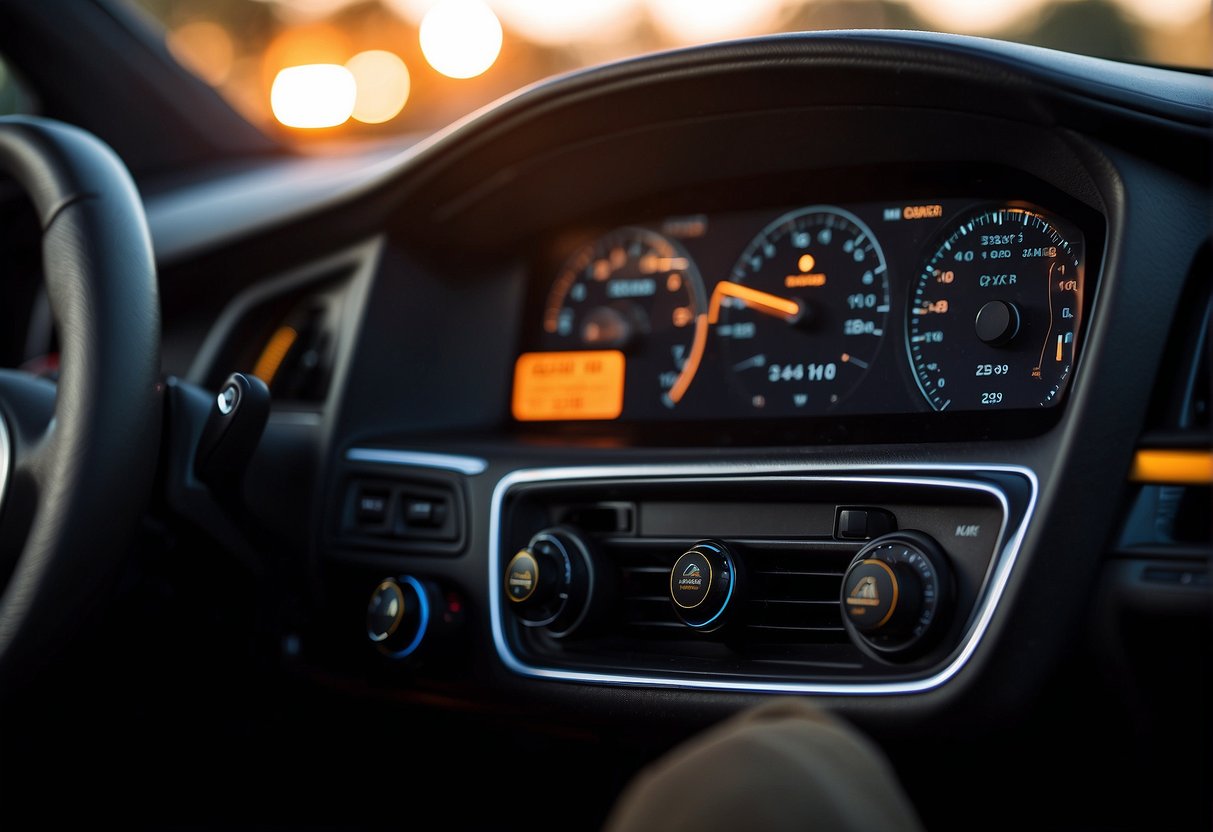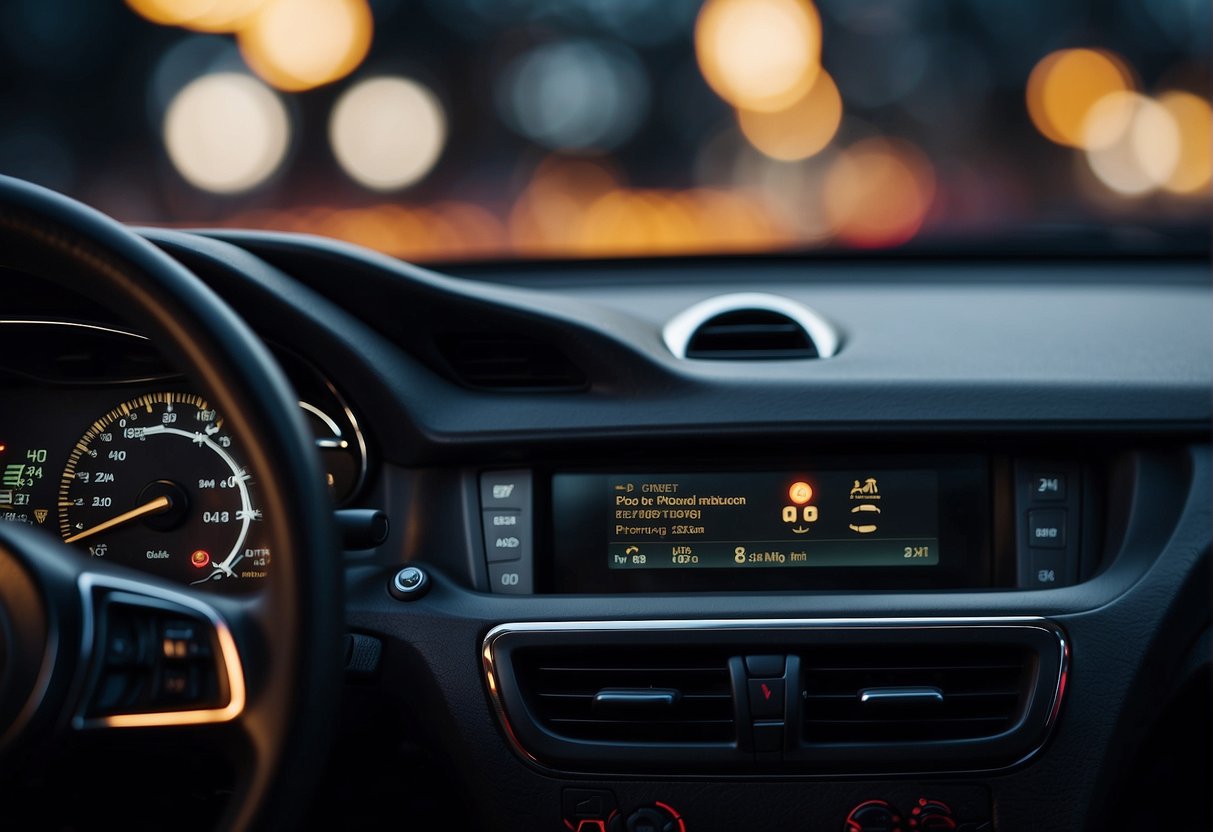If the car is with a key warning light on then this means that there is a car’s immobilization system problem or key programming problem. Generally, it resembles a car with a key/lock picture drawn on it and its operation turns on the security mechanism. This state-of-the-art security system prevents the vehicle from starting without ignition key which may occur due to various reasons such as malfunctioned key fob, key battery drained or electrical system problem.
Understanding the immobilizer system is essential for maintaining the security and functionality of a vehicle. Should the key warning light come on, it’s an indication that the vehicle’s anti-theft system has been triggered. Depending on the specific problem, the vehicle might fail to start until the issue is resolved. Possible causes encompass a wide range of faults, from a bad key fob to more complex electrical issues.
Immediate attention to this warning light is crucial, as it could represent a temporary glitch or a serious fault. Routine checks and early intervention can help ensure that the vehicle remains operational and secure. If the light turns on, a diagnostic procedure can help trace the source of the problem. Some issues might be as simple as replacing a battery, while others may require professional assistance to address more complex faults within the immobilizer system or the vehicle’s electronics.
Understanding the Car Key Warning Light
The car key warning light is an essential indicator for the driver, signaling issues about the vehicle’s key presence, communication, or an activated immobilizer system.
Function and Purpose
The car key warning light is integral to a vehicle’s immobilizer system. It informs the driver when the car’s internal computer does not detect the key fob within the vehicle’s cabin. This system’s primary function is to prevent the engine from starting without the recognized key fob, thereby reducing the risk of theft. Its purpose extends beyond security; it also indicates when the key is not in range due to signal interference or a dead key fob battery, and thus the vehicle cannot be started.
Visual Representation
The visual representation of this warning light usually consists of a key symbol, often illuminated in orange or red. Some vehicles have color-coded warning lights; they might show a green light when the key is detected and an orange or red light when it is not. This light is typically positioned on the dashboard among other dashboard warning lights, ensuring visibility for prompt attention from the driver.
Common Reasons for the Warning

Key Battery Low
The immobilizer system requires a key fob with sufficient battery power. When the key fob battery is low, the car may fail to detect the key, resulting in the activation of the warning light. It’s advisable to replace the key fob battery regularly to avoid such issues.
Key Not Detected
If a car cannot detect the key fob within the vehicle, the key warning light will likely illuminate. This occurs when the key is outside the vehicle or in a location where the communication between the key and the car’s system is obstructed.
Damaged Key or Ignition
A damaged key or problems with the ignition system can lead to the immobilizer system being unable to recognize the key. Scratches or wear on the key itself, or an issue with the vehicle’s ignition switch, can be the root cause of this problem. In such cases, repairing or replacing the damaged component will typically resolve the warning light issue.
Troubleshooting Steps
When addressing a car’s key warning light, it’s crucial to start with simple solutions before considering more complex ones. The following troubleshooting steps can help identify and potentially resolve the issue.
Checking Key Battery
The key fob battery is often the culprit when a car’s key warning light appears. Here’s how to check:
- Inspect Battery: Open the key fob and examine the battery for any signs of corrosion or depletion.
- Voltage Check: Use a multimeter to check the battery’s voltage level; if it’s below the recommended voltage, replace the battery.
Repositioning the Key
Sometimes the car’s sensor might not recognize the key due to its position.
- Adjust Key Placement: Ensure the key is within the designated detection area of the vehicle.
- Avoid Interference: Remove any nearby electronic devices that might interfere with the key’s signal.
Key and Lock Maintenance
Regular maintenance of the key and lock can prevent issues.
- Clean Key Fob: Wipe down the key fob with a dry cloth to remove any dirt or debris.
- Lubricate Lock Cylinder: If there’s difficulty in turning the key in the ignition, apply a non-conductive lubricant to the lock cylinder.
Preventive Measures
Ensuring the key warning light on the dashboard doesn’t illuminate unexpectedly is primarily about routine maintenance and care for the key and its components.
Regular Key Care
Regularly checking and maintaining car keys can prevent the activation of the key warning light. One should inspect their key fob for visible damage and ensure it’s free from debris that could interfere with its functions. If a key is not working properly, it may cause the key symbol to appear on the dashboard.
Battery Replacement Timing
The key fob relies on a battery to function, and when this battery starts to weaken, it could trigger the dashboard warning symbol. Replacing the key fob battery every 1-2 years or when signs of a failing battery emerge—such as decreased range or inconsistent performance—is advisable. Staying ahead of battery replacement can save one from unexpected lockouts and warning lights.
Avoiding Key Damage
- Keep keys away from moisture and extreme temperatures.
- Avoid dropping the key fob as impacts can dislodge or damage internal components.
- Keep keys separated from heavy objects that can cause pressure and damage when carried together.
By following these tips, one can most likely avoid the issues leading to the key symbol lighting up on the dashboard.
Professional Assistance
When the key warning light illuminates on a vehicle’s dashboard, it indicates that there is an issue with the car’s security system. If basic troubleshooting fails to solve the problem, seeking professional assistance is the next step to ensure the vehicle’s immobilizer system is functioning correctly.
When to Seek a Mechanic
A mechanic should be consulted if:
- The key warning light remains on after checking the key fob battery.
- The car fails to start, or the engine doesn’t turn over despite multiple attempts.
- There are warning codes displayed such as P0513 (Incorrect Immobilizer Key) or P0633 (Immobilizer Key Not Programmed). These conditions are indicative of deeper issues that require a professional diagnosis and repair.
Dealership Versus Local Repair
Dealership Service:
- May possess more specialized diagnostic tools for the specific make and model.
- Typically offers original equipment manufacturer (OEM) parts for repairs.
- Could be more expensive than local shops.
- Might provide a warranty on the service performed.
Local Repair Shop:
- Often offers more personalized service.
- May have quicker turnaround times.
- Could be more cost-effective than a dealership.
- Can perform a broad range of repairs but may lack certain proprietary diagnostic tools.
Advanced Diagnostics
When the car with a key warning light activates, it necessitates advanced diagnostic procedures to identify and resolve the underlying issues with the vehicle’s immobilizer system.
Diagnostic Tools
Diagnostic tools are crucial for mechanics to pinpoint problems signaled by the car with a key warning light. The most widely used tool is the On-Board Diagnostics (OBD) scanner, which interfaces with the car’s computer system to retrieve diagnostic trouble codes (DTCs). Key programming devices are also essential, as they can reprogram or initiate new keys if necessary.
Interpreting Error Codes
Once an OBD scanner retrieves error codes, a mechanic must interpret what these codes signify. For example, codes may indicate a malfunction in the immobilizer system, such as a miscommunication between the key and the car’s electronic control units (ECUs). Each error code, represented by a letter followed by four digits (e.g., P0513), corresponds to a specific issue which allows a knowledgeable technician to undertake targeted repairs.
Key Replacement and Reprogramming
When a car’s key warning light appears, it may indicate the need for key replacement or reprogramming. These procedures restore proper communication between the car’s immobilizer system and its keys.
Process of Key Replacement
Replacing a car key typically involves creating a new key and syncing it with the vehicle’s immobilizer system. Modern keys, including those with transponder chips, may require:
- Obtaining a blank key: This often matches the original key design.
- Cutting the key: It must be cut accurately to fit the vehicle’s locks and ignition.
On occasion, replacement can be done at home, but for advanced keys, including transponder keys, locksmiths or dealerships will need to be involved.
Reprogramming Considerations
Reprogramming a car key involves syncing the key’s transponder chip with the vehicle’s immobilizer system. Several factors can affect this process, such as:
- Availability of programming equipment: Not all keys can be reprogrammed easily at home, and might require specialized tools available at a dealership or locksmith.
- Vehicle model and make: Specific procedures vary and may involve complex sequences or equipment.
Reprogramming often fixes issues such as the key symbol on the dashboard. However, if the key warning light persists, additional troubles within the immobilizer system or other electrical components may exist.
Legal and Warranty Considerations
Understanding the legal and warranty parameters concerning your vehicle’s key warning light is essential. These considerations can impact both the vehicle’s security and the owner’s rights.
Warranty Implications
When a key symbol appears on your car’s dashboard, it typically signals a problem with the immobilizer system. The implications for your car’s warranty can vary. New vehicles, still under the manufacturer’s warranty, will often have this system covered, meaning that defects in material or workmanship related to the key warning light and immobilizer could warrant free repairs. However, owners should carefully review their warranty’s fine print as different components might have varied coverage periods. For example, electrical systems might be covered for 3 years/36,000 miles, whereas the comprehensive coverage could last for 5 years/60,000 miles. If unauthorized modifications have been made or aftermarket parts installed, this might void relevant warranty clauses.
Legal Aspects of Key Replacement
Legally, car owners have the right to have their keys replaced or copied. However, due to the sophisticated technology involved in modern vehicle keys, such as coded transmitters and microchips that communicate with the immobilizer, the replacement often needs to be performed by an authorized dealer or a skilled locksmith with the right equipment. Additionally, car manufacturers are legally obliged to provide support for key replacements, but they also hold the right to charge for the service. For security reasons, proper verification of ownership is necessary before a replacement key is issued, which often involves presenting documents like the vehicle registration and a government-issued ID.


